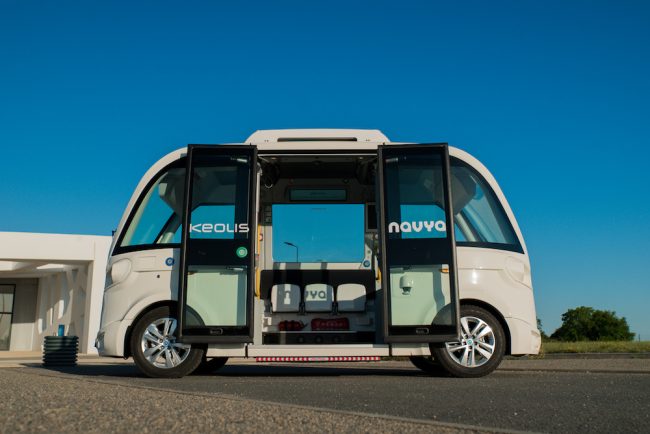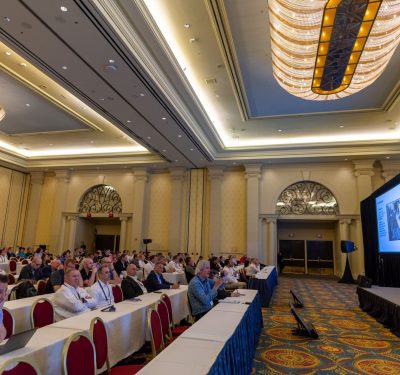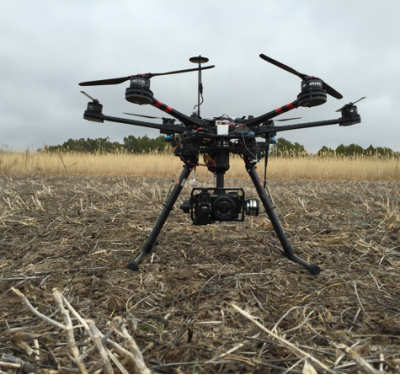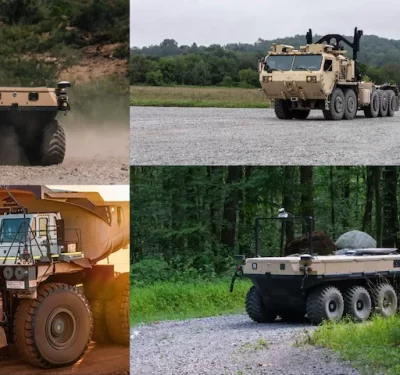 The Autonom Shuttle Evo from Navya has been providing a fully autonomous shuttle service in France since late last month.
The Autonom Shuttle Evo from Navya has been providing a fully autonomous shuttle service in France since late last month.
In partnership with Keolis, the level 4 autonomous shuttle service has been operating at the National Sport Shooting Centre (NSSC) in Châteauroux, France, without a safety operator on board, according to a news release. The service takes athletes and visitors from the car park to the reception area on a predefined route of 1.5 km. The shuttle travels at a maximum speed of 18 km/hour.
This marks the first global deployment of the shuttle, which is the result of six years of experimentation and about 200 Navya deployments worldwide. The latest version of the shuttle incorporates a variety of improvements to achieve level 4 autonomy, including autonomation of functions to offboard the safety operator in a remote supervision center as well as a reinforced, optimized sensor architecture to provide a wider vision that is said to guarantee safety.
The shuttle offers a new user experience that includes a passenger information banner with visual and audible announcements as well as optimized access for people with reduced mobility. There is also enhanced connectivity to remotely monitor vehicle status in real time and ensure secure predictive maintenance.
“Navya Driver” autonomous driving software and the sensor architecture behind the shuttle makes it possible for it to operate without a safety driver in a determined environment on a predefined route. Off-board supervisors can take control in real time if necessary.
Later in the trial, the shuttle will be supervised from a remote location. The shuttle will operate on a route that includes a multi-lane road and intersections with connected traffic lights.
“The integration of this level 4 fully autonomous service operated by Keolis is an important step for Navya. We want to demonstrate that we are going to provide a truly autonomous transport service,” Navya CEO Etienne Hermite said, according to the release. “This is the key to deliver on the promise of driverless and the business model associated. Indeed, even at controlled speed and in a controlled environment, there are countless commercial uses (industrial sites, campuses, tourist sites, etc.) that represent as many opportunities for our technology. In the coming months, we will focus on taking the steps that will enable us to commercialize these use cases.”






